Today Current Affairs: 29th July 2021 for UPSC IAS exams, State PSC exams, SSC CGL, State SSC, RRB, Railways, Banking Exam & IBPS, etc
Table of Contents
Artillery Interception System:

South Korea has approved plans to develop an artillery interception system, similar to Israel’s Iron Dome.
- This new defence system will be designed and built specifically to thwart attacks by rockets and long-range missiles launched by North Korea.
- The South Korean government had announced in June that it would be spending approximately $2.5 billion on research and development of this new system, with a target to deploy it by 2035.
- North Korea deploys around 1,000 artillery pieces along the Military Demarcation Line that divides the Korean Peninsula.
- There are operational differences between the two systems as well, with the most significant being that South Korea’s system will be designed to intercept long-range artillery pieces.
- But more importantly, South Korea and Israel face different security threats that require different responses.
- While Israel contends with Hamas, which is primarily a militant group, South Korea had to contend with North Korea, a nation with its own extensive military capabilities.
Joint Actions In Afghanistan: China-Pakistan:
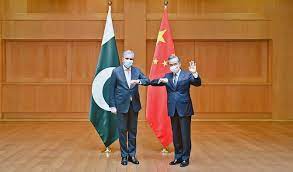
China and Pakistan have decided to launch Joint Actions in Afghanistan to stop the war-torn country from becoming a hotbed for terrorism.
- The recent withdrawal of US troops from Afghanistan has been matched by the swift advance of the Taliban across the nation.
Joint Action: It has been outlined in five areas:
- To avoid the expansion of war and prevent Afghanistan from falling into a full-scale civil war.
- To promote the intra-Afghan negotiations between the government and the Taliban and establish “a broad and inclusive political structure”.
- To resolutely combat terrorist forces and push all major forces in Afghanistan to draw a clear line against terrorism.
- To promote cooperation among Afghanistan’s neighbours and to explore the construction of a platform for cooperation among them.
- To closely work on international fora on the Afghan issue.
Marine Aids To Navigation Bill 2021:

The Parliament has passed the Marine Aids to Navigation Bill 2021. The bill will repeal the Lighthouse Act, 1927, an over nine-decade-old law governing the traditional navigation aid, i.e. lighthouses.
- Uptil now, the administration and management of Lighthouse and Lightships in India is governed by Lighthouse Act 1927 for safe navigation.
- Lighthouses serve two main purposes viz. as a navigational aid and to warn boats of dangerous areas.
- It is like a traffic sign on the sea.
- However, as the technology evolved, systems were put in place where with the help of Radar and other sensors, vessels were advised from shore about the position.
- Thus, Vessel Traffic Services (VTS) came into existence and found wide acceptability.
- These modern, technologically improved aids to marine navigation systems have changed their profile from a ‘passive’ service to that of ‘passive as well as interactive’ service.
- The need for enactment of a new Act is necessitated to provide an appropriate statutory framework which reflects the modern role of marine aids to navigation and to be in compliance with India’s obligations under International Conventions.
Salient Features of the Bill:
Main Objectives:
- Incorporating the global best practices and technological developments,
- Complying with India’s International obligations in the field of Marine Aids to Navigation,
- Making the legislative framework user-friendly,
- Promoting ease of doing business.
Scope of the Law: The Bill applies to the whole of India including various maritime zones including territorial waters, continental shelf, and exclusive economic zone.
- It defines aid to navigation as a device, system or service, external to vessels, designed and operated to enhance safe and efficient navigation of individual vessels and vessel traffic.
- Vessel traffic service means a service implemented under the Act to improve the safety and efficiency of vessel traffic and to protect the environment.
- Institutional Mechanism: The Bill provides that the Central government shall appoint a Director General, who will inter alia advise the central government on matters related to aids to navigation.
- It also provides for appointments of Deputy Director Generals and Directors for districts.
- Heritage Lighthouse: The Bill empowers the Central Government to designate any aid to navigation under its control as a “heritage lighthouse”.
- In addition to their function as aids to navigation, such lighthouses will be developed for educational, cultural, and tourism purposes.
- Offences and Penalties: It comprises a new schedule of offences, along with commensurate penalties for obstructing and damaging the aids to navigation, and non-compliance with directives issued by the Central Government and other bodies.
Exercise INDRA-21:
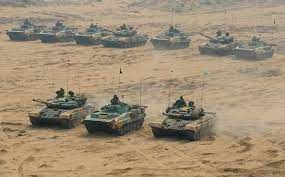
The 12th Edition of Indo-Russia joint military Exercise INDRA will be held at Volgograd, Russia in August 2021.
- The exercise will entail conduct of counter terror operations under the United Nations mandate by a joint force against international terror groups.
- The INDRA series of exercises began in 2003 and was conducted as a bilateral naval exercise alternately between the two countries.
- However, the first joint Tri-Services Exercise was conducted in 2017.
- The last joint, tri-services exercise between India and Russia was conducted in India in December 2019.
- It was held simultaneously at Babina (near Jhansi), Pune, and Goa.
Dholavira: UNESCO World Heritage:

Dholavira, the archaeological site of a Harappan-era city, received the UNESCO world heritage site tag.
- While Dholavira became the fourth site from Gujarat and 40th from India to make the list, it is the first site of the ancient Indus Valley Civilisation (IVC) in India to get the tag.
- The IVC acropolis is located on a hillock near present-day Dholavira village in Kutch district, from which it gets its name.
Distinct features:
- After Mohen-jo-Daro, Ganweriwala and Harappa in Pakistan and Rakhigarhi in Haryana of India, Dholavira is the fifth largest metropolis of IVC.
- The site has a fortified citadel, a middle town and a lower town with walls made of sandstone or limestone instead of mud bricks in many other Harappan sites.
- Some of the unique features of the Dholavira site are a cascading series of water reservoirs, outer fortification, two multi-purpose grounds — one of which was used for festivities and as a marketplace — nine gates with unique designs, and funerary architecture featuring tumulus — hemispherical structures like the Buddhist Stupas.
- While unlike graves at other IVC sites, no mortal remains of humans have been discovered at Dholavira.
- Remains of a copper smelter indicate of Harappans, who lived in Dholavira, knew metallurgy.
What Are Phosphorus Rocks?:
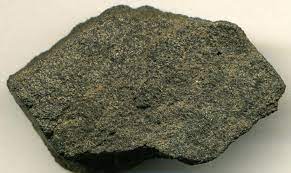
Union Minister of Chemicals and Fertilizers informed Parliament that India will explore indigenous deposits of phosphatic rock, a step towards becoming AatmaNirbhar in fertilizer production.
- Phosphorus rocks or phosphate rocks are unprocessed ores.
- Phosphate rock deposits can be sedimentary (formed from sediment deposited by water or air) or igneous (having solidified from lava or magma).
- However, the easiest way to obtain phosphorus is by way of mining and concentrating phosphate rock from the phosphate deposits.
- Used in fertilizers
- Worldwide, more than 85% of the phosphate rock mined is used to manufacture phosphate fertilizers.
- All common fertilizers have an “N-P-K” rating. Phosphorus is the “P” in fertilizers, which is essential for plants.
- Phosphate rock deposits can be sedimentary or igneous and are mined from sedimentary deposits formed by the deposition of phosphate-rich materials in marine environments.
- Large sedimentary deposits are located in China, Middle East, Northern Africa, and the United States.
- Meanwhile, the igneous deposits are mined in Brazil, Canada, Finland, Russia, South Africa, and Zimbabwe.
- Phosphorus in India: Phosphate rocks are majorly produced only from two States in India, namely Rajasthan and Madhya Pradesh.
- Currently, there exists 30 lakh MT of phosphorite deposits in the country, for which important steps are being taken by the Government to ramp up its production.
- These deposits are available in Rajasthan, central part of peninsular India, Hirapur (Madhya Pradesh), Lalitpur (Uttar Pradesh), Mussoorie syncline, and Cuddapah basin (Andhra Pradesh).
Merchandise Programme:

In a bid to create awareness and kindling interest of students, children and the public in the domain of space and technology, the Indian Space Research Organisation (ISRO) has come up with the customised-themed merchandise programme in partnership with multiple companies on board.
- So far, eight companies have registered with ISRO on a non-exclusive basis with a registration fee regarding customised ISRO-theme-based articles/models and it includes Indic Inspirations (Pune), 1947IND (Bengaluru), and Ankur Hobby Centre (Ahmedabad).
- The collection will include authorised products that are connected to ISROs past missions and achievements, work, such as scale models, T-shirts, mugs, space-themed educational games, science toys, and more.
- Special attention would be given to 3D models and 2D drawings that are being used to make scaled models, LEGO sets, jigsaw puzzles, etc. to ensure accuracy and ISRO intellect.
James Webb Space Telescope (JWST):
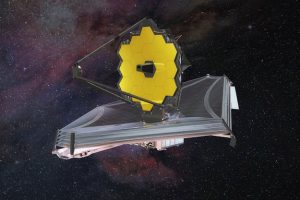
NASA is set to launch the large infrared James Webb Space Telescope (JWST) touted as the “premier observatory” of the coming decade later this year.
- Considered the successor of the Hubble Space Telescope, JWST will study various phases in the history of the universe, from the formation of solar systems to the evolution of our own Solar System.
- But before it launches, NASA has an important decision to make — whether to rename the $8.8-billion telescope.
- These considerations stem from allegations that NASA’s former government-appointed administrator James Webb, after whom JWST is named, had persecuted homosexuals when he had worked for the government.
- In May, four prominent astronomers wrote that Webb (1906-92) purged LGBT individuals from the workforce after he arrived at NASA in 1961 (he served until 1968). The debate marks a rare instance of astronomers making a political statement.
GRB 200826A: Gamma-Ray Burst:
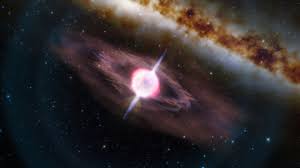
A group of astronomers have detected a very short, powerful burst of high-energy radiation also known as Gamma-Ray Bursts (GRBs) that lasted for about a second.
- It was named GRB 200826A after the date it occurred, which is 26th August 2020.
- It was detected by National Aeronautics and Space Administration’s (NASA’s) Fermi Gamma-ray Space Telescope.
Gamma-Ray Bursts:
- They are the most powerful events in the universe, detectable across billions of light-years.
- A light-year is the distance a beam of light travels in a single Earth year, or 9.5 trillion kilometers.
- Astronomers classify them as long or short based on whether the event lasts for more or less than two seconds.
Long GRBs:
- They observe long bursts in association with the demise of massive stars.
- When a star much more massive than the Sun runs out of fuel, its core suddenly collapses and forms a black hole.
- Black hole refers to a point in space where matter is so compressed as to create a gravity field from which even light cannot escape.
- As matter swirls toward the black hole, some of it escapes in the form of two powerful jets that rush outward at almost the speed of light in opposite directions.
- Astronomers only detect a GRB when one of these jets happens to point almost directly toward Earth.
- Each jet drills through the star, producing a pulse of gamma rays – the highest-energy form of light – that can last up to minutes.
- Following the burst, the disrupted star then rapidly expands as a supernova.
- A supernova is the name given to an exploding star that has reached the end of its life.
Short GRB:
- Short GRB, on the other hand, forms when pairs of compact objects – such as neutron stars, which also form during stellar collapse – spiral inward over billions of years and collide.
- A Neutron star comprises one of the possible evolutionary end-points of high mass stars.
GRB 200826A:
- It was a sharp blast of high-energy emission lasting just 0.65 seconds.
- After traveling for a very long period of time through the expanding universe, the signal had stretched out to about one-second-long when it was detected by Fermi’s Gamma-ray Burst Monitor.
- It had been racing toward Earth for nearly half the present age of the universe.
- It is considered to be the the shortest GRB till now and it occurred caused by the death of a massive star.
World Economic Outlook: IMF:

The latest edition of the International Monetary Fund’s (IMF) World Economic Outlook has cut its 2021 growth forecast for India to 9.5% from 12.5% estimated earlier in April 2021.
- While re-calibrating its forecast IMF considered two major factors which are access to vaccines and risk of new Corona-variants.
Indian Economy:
- Indian economy is expected to grow by 9.5% in 2021 and 8.5% in 2022 (larger than the 6.9% it had projected in April).
- In 2020, India’s economy witnessed an estimated contraction of 8%.
- The IMF has cut its growth forecast because of the Covid-19 Second Wave that hit the recovery momentum, damaging consumer confidence and rural demand.
Global Economy:
- Retained its global growth forecast at 6% for the year 2021, and it is expected to grow at 4.9% for the year 2022.
In 2020, the global economy contracted by 3.3% - Global Trade Volume: Revised up its predictions of global trade volume growth by a sharp 130 bps for 2021 to 9.7% and 50 bps for 2022 to 7%.
- India is set to benefit from an expected rise in global trade prospects once its supply side gains traction.
Factoring Regulation (Amendment) Bill 2020:

The Bill was recently passed by the Lok Sabha. The Bill seeks to widen the scope of entities that can engage in factoring business.
- Factoring is a transaction where an entity (like MSMEs) ‘sells’ its receivables ( dues from a customer) to a third party ( a ‘factor’ like a bank or NBFC) for immediate funds (partial or full).
- Currently, seven non-bank finance companies called NBFC factors do the majority of the factoring through the principal business condition.
Key Provisions:
- The Bill has done away with threshold for NBFCs to get into the factoring business.
- It widens the scope of financiers and to permit other non banking finance companies also to undertake factoring business and participate on the Trade Receivables Discounting System platform for discounting the invoices of micro, small and medium enterprises.
- It reduces the time period for registration of invoice and satisfaction of charge upon it, in order to avoid possibility of dual financing.
- It empowers the Reserve Bank of India to make regulations with respect to factoring business.




